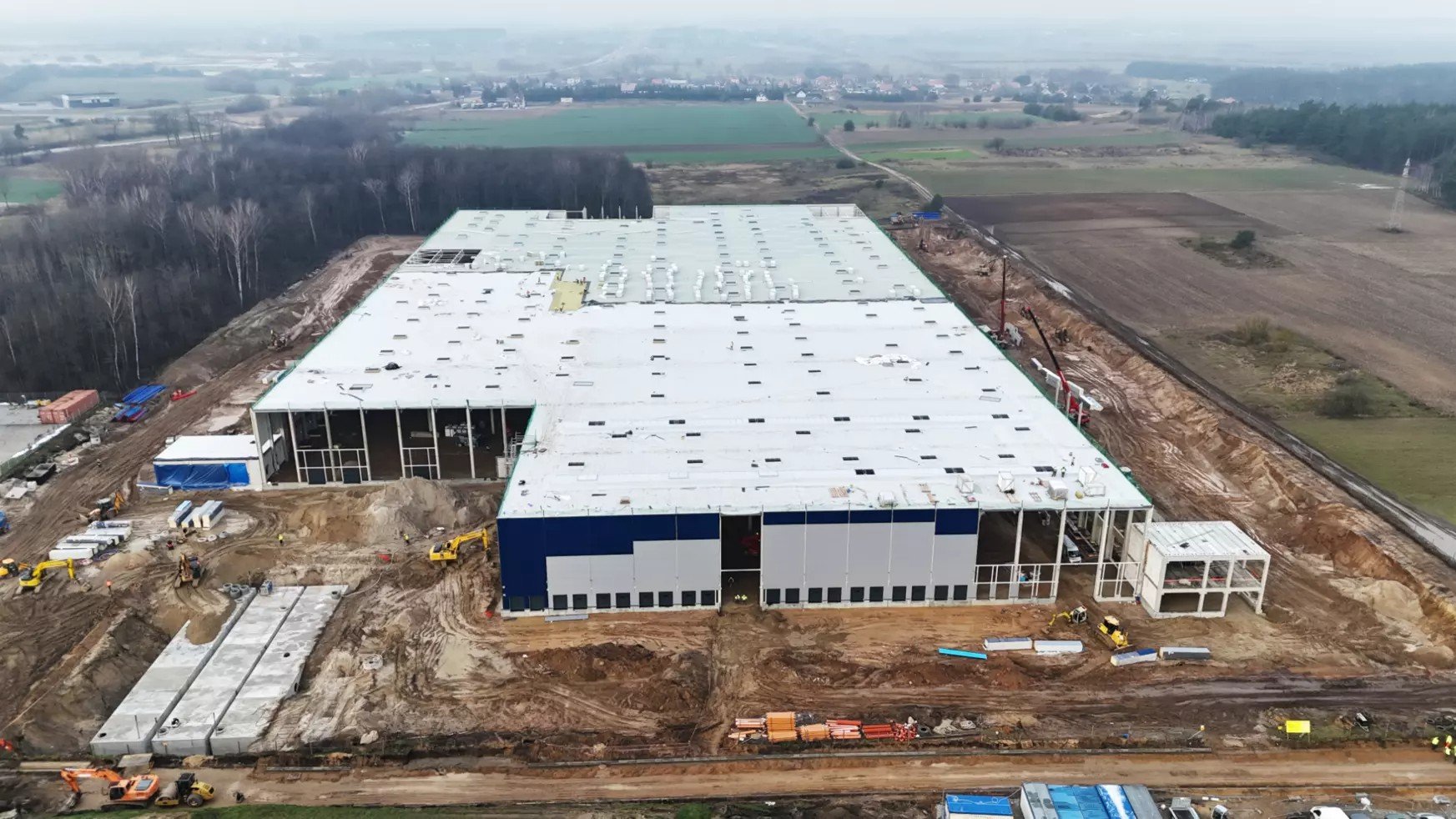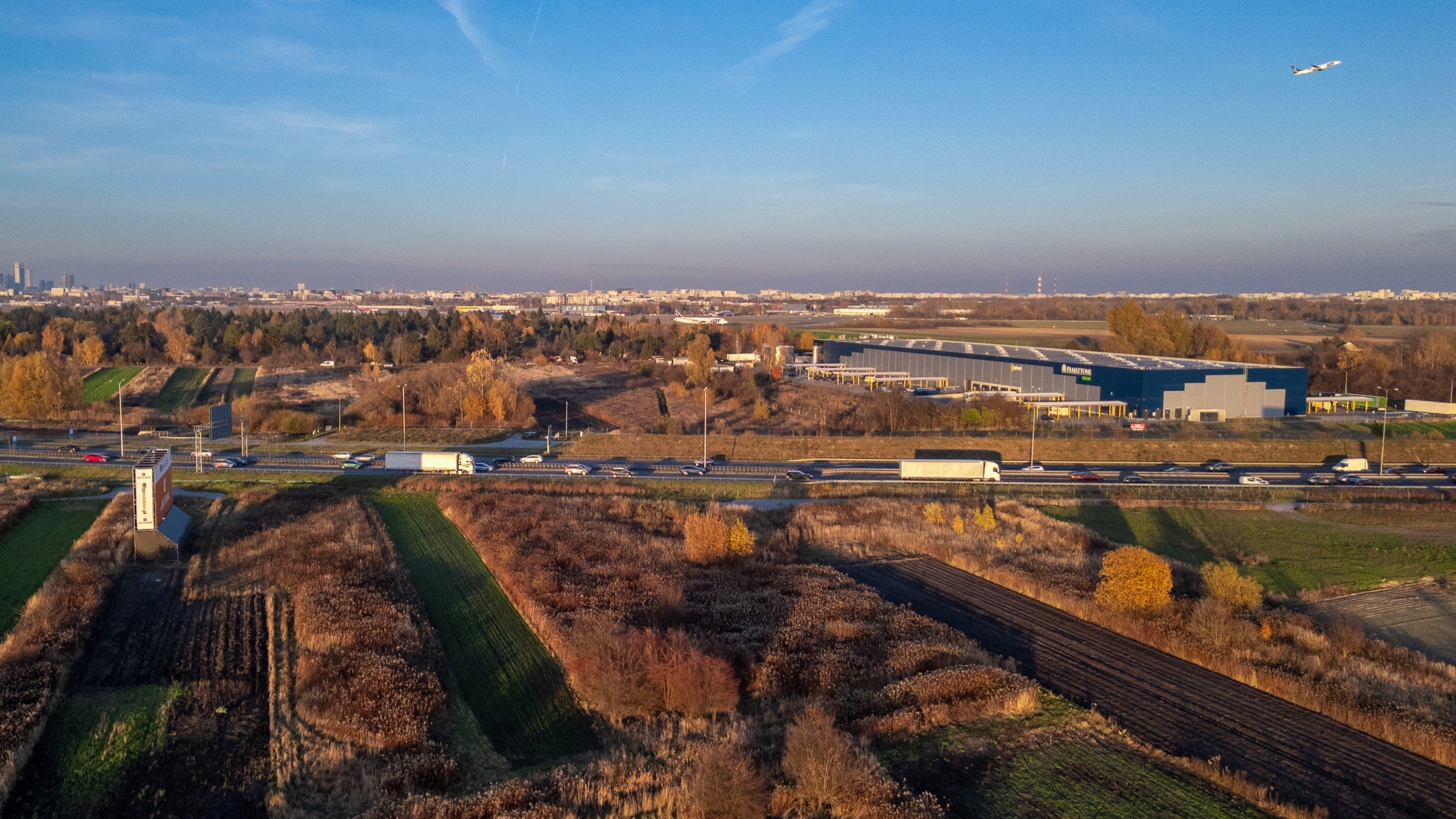According to the latest report “Industrial and Warehouse Market in Poland”, released by real estate advisory firm Newmark Polska, Poland’s total warehouse and industrial stock topped 35 million sqm in the first quarter of 2025. Meanwhile, with over 5.25 million sqm of warehouse space, Lower Silesia overtook Central Poland, securing third place among Poland’s largest regional markets. Availability in existing warehouses reached nearly 3 million sqm – the highest volume of vacant leasable space in the history of the Polish market. That said, the overall vacancy rate edged up by just 0.3 pp year-on-year.
At the end of the first quarter of 2025, Poland’s total warehouse and industrial stock surpassed the 35 million sqm mark, representing a year-on-year increase of just under 8 percent.
“Approximately 679,700 sqm came on stream in the three months to March, up 34 percent from the previous quarter but down by over 20 percent compared with the first quarter of 2024. Nearly half of this volume was completed in Lower Silesia, which overtook Central Poland in terms of warehouse and industrial stock, moving into the third spot among Poland’s largest regional markets,” says Jakub Kurek, Head of Industrial and Warehouse, Newmark Polska.
Development activity continues to decline from quarter to quarter. At the end of March 2025, just under 1.4 million sqm of warehouse and industrial space was under construction, down by 21.8 percent from the fourth quarter of 2024 and nearly 41 percent year-on-year. This marks the least active quarterly under construction volume since the third quarter of 2019. Only three provinces – Mazovia, Upper Silesia and Łódzkie – had more than 250,000 sqm underway each, with all other provinces recording less than 100,000 sqm in the commenced space. New construction starts totalled nearly 310,000 sqm between January and the end of March 2025, with 70 percent of this volume breaking ground in Mazovia. Overall, Poland’s six core industrial regions accounted for nearly 80 percent of the development pipeline (Warsaw and its suburbs, Upper Silesia, Lower Silesia, Central Poland, Greater Poland and Tricity).
“Total take-up for the first quarter of 2025 reached nearly 1.11 million sqm, up by over 16 percent year-on-year but down by 45.1 percent quarter-on-quarter. While average first-quarter leasing activity over the past five years remained below 1.3 million sqm, the Q1 2025 leasing market performance suggests that occupier demand is likely to remain steady throughout 2025, with total take-up expected to exceed 5 million sqm,” adds Jakub Kurek.
The structure of recorded demand in the first quarter of 2025 was dominated by renewals, which accounted for 57 percent of total take-up, followed by new leases and expansions which made up 36 percent and 7 percent respectively.
It is also worth adding that a total of 56,650 sqm was transacted under shorter leases of up to one year. Regearing accounted for a significant proportion of leasing activity in Mazovia (76.6 percent of the take-up volume), Western Pomerania (72.2 percent), Upper Silesia (69.1 percent), and Łódzkie (67.0 percent).
The largest lettings in the three months to end-March 2025 included a confidential 3PL provider’s lease of 67,800 sqm in 7R Park Gdańsk III, the renewal of a 55,900 sqm lease in Prologis Park Chorzów, and OBI’s renewal of a 50,600 sqm BTS facility in P3 Łódź.
At the end of March 2025, the overall vacancy rate stood at 8.5 percent, up by 1.0 pp over the quarter and 0.3 pp year-on-year. Nearly 3 million sqm of warehouse and industrial space remained vacant in standing buildings, signifying a steady increase in vacancies and marking the highest volume of available stock on record. By comparison, availability in warehouse and industrial projects under construction totalled 565,500 sqm, accounting for over 41 percent of the development pipeline.
“Prime industrial and warehouse rents remain relatively flat across Poland’s core markets. At the end of March 2025, the highest rental rates were in Warsaw (zone 1), Upper Silesia, Pomerania and Lesser Poland. Occupier demand remains strong for sustainable warehouses and facilities that support both cost and space optimisation. These types of properties typically command rents at the upper end of the price bracket and offer relatively limited lease incentives,” says Agnieszka Giermakowska, Research & Advisory Director, ESG Lead, Newmark Polska.







